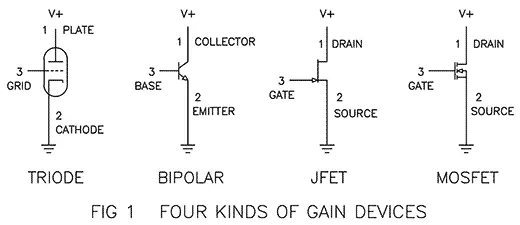ampetrosillo
Member
- Joined
- Feb 23, 2024
- Messages
- 19
- Likes
- 10
I'm a bit frustrated at the available material on the 'net for building MI amplifiers: I want to build a solid state bass/guitar amp, which does not require hi-fi levels of linearity (like, average power could be stated @ 2-3% THD and it would still be "clean"), can clip gracefully and softly, can interact with the speaker if desired (variable mixed-mode feedback then it is) and can be used as an instrument (as you do with electric guitar and bass) but essentially what you can find documentation-wise is either hi-fi-oriented stuff (where the notion of power amp distortion is dismissed a priori, and of course, it makes sense) or tube stuff, with nothing in between. Even the solid state guitar amplifier people suggest moving everything clip-wise to the preamp, apparently ignoring the fact that what makes tube amps so highly sought after, by guitarists especially, is their interactivity with the speaker (therefore clipping is really a function of speaker impedance, therefore in order to be "authentic" it should happen at least in the feedback path from the output to the power amp's input) as well as their relative ease of use (no thinking about clip lights, correct gain staging, etc. just turn that pot up and play).
(I do realise that this means that a 50W amp needs to be cranked to get that tone, and this is often inconvenient - which is why many amps incorporate lower power modes these days, by the way - or, conversely, a 15W amp can't be expected to sound clean at higher pressure levels, but there still is value in this).
Therefore, are there any materials I could peruse to gain a better insight over this?
(I do realise that this means that a 50W amp needs to be cranked to get that tone, and this is often inconvenient - which is why many amps incorporate lower power modes these days, by the way - or, conversely, a 15W amp can't be expected to sound clean at higher pressure levels, but there still is value in this).
Therefore, are there any materials I could peruse to gain a better insight over this?

